The Third Voyage of Christopher Columbus
Artem Dunaev / EyeEm / Getty Images
- History Before Columbus
- Colonialism and Imperialism
- Caribbean History
- Central American History
- South American History
- Mexican History
- American History
- African American History
- African History
- Ancient History and Culture
- Asian History
- European History
- Medieval & Renaissance History
- Military History
- The 20th Century
- Women's History
- Ph.D., Spanish, Ohio State University
- M.A., Spanish, University of Montana
- B.A., Spanish, Penn State University
After his famous 1492 voyage of discovery , Christopher Columbus was commissioned to return a second time, which he did with a large-scale colonization effort which departed from Spain in 1493. Although the second journey had many problems, it was considered successful because a settlement was founded: it would eventually become Santo Domingo , capital of the present-day Dominican Republic. Columbus served as governor during his stay in the islands. The settlement needed supplies, however, so Columbus returned to Spain in 1496.

Preparations for the Third Voyage
Columbus reported to the crown upon his return from the New World. He was dismayed to learn that his patrons, Ferdinand and Isabella , would not allow enslaved people from the newly discovered lands to be used as payment. As he had found little gold or precious commodities for which to trade, he had been counting on selling enslaved people to make his voyages lucrative. The King and Queen of Spain allowed Columbus to organize a third trip to the New World with the goal of resupplying the colonists and continuing the search for a new trade route to the Orient.
The Fleet Splits
Upon departure from Spain in May of 1498, Columbus split his fleet of six ships: three would make for Hispaniola immediately to bring desperately needed supplies, while the other three would aim for points south of the already explored Caribbean to search for more land and perhaps even the route to the Orient that Columbus still believed to be there. Columbus himself captained the latter ships, being at heart an explorer and not a governor.
Doldrums and Trinidad
Columbus’ bad luck on the third voyage began almost immediately. After making slow progress from Spain, his fleet hit the doldrums, which is a calm, hot stretch of ocean with little or no wind. Columbus and his men spent several days battling heat and thirst with no wind to propel their ships. After a while, the wind returned and they were able to continue. Columbus veered to the north, because the ships were low on water and he wanted to resupply in the familiar Caribbean. On July 31, they sighted an island, which Columbus named Trinidad. They were able to resupply there and continue exploring.
Sighting South America
For the first two weeks of August 1498, Columbus and his small fleet explored the Gulf of Paria, which separates Trinidad from mainland South America. In the process of this exploration, they discovered the Island of Margarita as well as several smaller islands. They also discovered the mouth of the Orinoco River. Such a mighty freshwater river could only be found on a continent, not an island, and the increasingly religious Columbus concluded that he had found the site of the Garden of Eden. Columbus fell ill around this time and ordered the fleet to head to Hispaniola, which they reached on August 19.
Back in Hispaniola
In the roughly two years since Columbus had been gone, the settlement on Hispaniola had seen some rough times. Supplies and tempers were short and the vast wealth that Columbus had promised settlers while arranging the second voyage had failed to appear. Columbus had been a poor governor during his brief tenure (1494–1496) and the colonists were not happy to see him. The settlers complained bitterly, and Columbus had to hang a few of them in order to stabilize the situation. Realizing that he needed help governing the unruly and hungry settlers, Columbus sent to Spain for assistance. It was also here where Antonio de Montesinos is remembered to have given an impassioned and impactful sermon.
Francisco de Bobadilla
Responding to rumors of strife and poor governance on the part of Columbus and his brothers, the Spanish crown sent Francisco de Bobadilla to Hispaniola in 1500. Bobadilla was a nobleman and a knight of the Calatrava order, and he was given broad powers by the Spanish crown, superseding those of Colombus. The crown needed to rein in the unpredictable Colombus and his brothers, who in addition to being tyrannical governors were also suspected of improperly gathering wealth. In 2005, a document was found in the Spanish archives: it contains first-hand accounts of the abuses of Columbus and his brothers.
Columbus Imprisoned
Bobadilla arrived in August 1500, with 500 men and a handful of native people that Columbus had brought to Spain on a previous voyage to enslave; they were to be freed by royal decree. Bobadilla found the situation as bad as he had heard. Columbus and Bobadilla clashed: because there was little love for Columbus among the settlers, Bobadilla was able to clap him and his brothers in chains and throw them in a dungeon. In October 1500, the three Columbus brothers were sent back to Spain, still in shackles. From getting stuck in the doldrums to being shipped back to Spain as a prisoner, Columbus’ Third Voyage was a fiasco.
Aftermath and Importance
Back in Spain, Columbus was able to talk his way out of trouble: he and his brothers were freed after spending only a few weeks in prison.
After the first voyage, Columbus had been granted a series of important titles and concessions. He was appointed Governor and Viceroy of the newly discovered lands and was given the title of Admiral, which would pass to his heirs. By 1500, the Spanish crown was beginning to regret this decision, as Columbus had proven to be a very poor governor and the lands he had discovered had the potential to be extremely lucrative. If the terms of his original contract were honored, the Columbus family would eventually siphon off a great deal of wealth from the crown.
Although he was freed from prison and most of his lands and wealth were restored, this incident gave the crown the excuse they needed to strip Columbus of some of the costly concessions that they had originally agreed to. Gone were the positions of Governor and Viceroy and the profits were reduced as well. Columbus’ children later fought for the privileges conceded to Columbus with mixed success, and legal wrangling between the Spanish crown and the Columbus family over these rights would continue for some time. Columbus’ son Diego would eventually serve for a time as Governor of Hispaniola due to the terms of these agreements.
The disaster that was the third voyage essentially brought to a close the Columbus Era in the New World. While other explorers, such as Amerigo Vespucci , believed that Columbus had found previously unknown lands, he stubbornly held to the claim that he had found the eastern edge of Asia and that he would soon find the markets of India, China, and Japan. Although many at court believed Columbus to be mad, he was able to put together a fourth voyage , which if anything was a bigger disaster than the third one.
The fall of Columbus and his family in the New World created a power vacuum, and the King and Queen of Spain quickly filled it with Nicolás de Ovando, a Spanish nobleman who was appointed governor. Ovando was a cruel but effective governor who ruthlessly wiped out native settlements and continued the exploration of the New World, setting the stage for the Age of Conquest.
Herring, Hubert. A History of Latin America From the Beginnings to the Present. . New York: Alfred A. Knopf, 1962
Thomas, Hugh. Rivers of Gold: The Rise of the Spanish Empire, from Columbus to Magellan. New York: Random House, 2005.
- Biography of Christopher Columbus
- The Second Voyage of Christopher Columbus
- Biography of Christopher Columbus, Italian Explorer
- 10 Facts About Christopher Columbus
- The Fourth Voyage of Christopher Columbus
- The First New World Voyage of Christopher Columbus (1492)
- The Truth About Christopher Columbus
- Biography of Juan Ponce de León, Conquistador
- La Navidad: First European Settlement in the Americas
- Where Are the Remains of Christopher Columbus?
- Biography of Bartolomé de Las Casas, Spanish Colonist
- Biography of Vasco Núñez de Balboa, Conquistador and Explorer
- Biography of Hernando Cortez
- Explorers and Discoverers
- The History of Santo Domingo, Dominican Republic
- Biography of Diego Velazquez de Cuellar, Conquistador
- History Classics
- Your Profile
- Find History on Facebook (Opens in a new window)
- Find History on Twitter (Opens in a new window)
- Find History on YouTube (Opens in a new window)
- Find History on Instagram (Opens in a new window)
- Find History on TikTok (Opens in a new window)
- This Day In History
- History Podcasts
- History Vault
Christopher Columbus
By: History.com Editors
Updated: August 11, 2023 | Original: November 9, 2009

The explorer Christopher Columbus made four trips across the Atlantic Ocean from Spain: in 1492, 1493, 1498 and 1502. He was determined to find a direct water route west from Europe to Asia, but he never did. Instead, he stumbled upon the Americas. Though he did not “discover” the so-called New World—millions of people already lived there—his journeys marked the beginning of centuries of exploration and colonization of North and South America.
Christopher Columbus and the Age of Discovery
During the 15th and 16th centuries, leaders of several European nations sponsored expeditions abroad in the hope that explorers would find great wealth and vast undiscovered lands. The Portuguese were the earliest participants in this “ Age of Discovery ,” also known as “ Age of Exploration .”
Starting in about 1420, small Portuguese ships known as caravels zipped along the African coast, carrying spices, gold and other goods as well as enslaved people from Asia and Africa to Europe.
Did you know? Christopher Columbus was not the first person to propose that a person could reach Asia by sailing west from Europe. In fact, scholars argue that the idea is almost as old as the idea that the Earth is round. (That is, it dates back to early Rome.)
Other European nations, particularly Spain, were eager to share in the seemingly limitless riches of the “Far East.” By the end of the 15th century, Spain’s “ Reconquista ”—the expulsion of Jews and Muslims out of the kingdom after centuries of war—was complete, and the nation turned its attention to exploration and conquest in other areas of the world.
Early Life and Nationality
Christopher Columbus, the son of a wool merchant, is believed to have been born in Genoa, Italy, in 1451. When he was still a teenager, he got a job on a merchant ship. He remained at sea until 1476, when pirates attacked his ship as it sailed north along the Portuguese coast.
The boat sank, but the young Columbus floated to shore on a scrap of wood and made his way to Lisbon, where he eventually studied mathematics, astronomy, cartography and navigation. He also began to hatch the plan that would change the world forever.
Christopher Columbus' First Voyage
At the end of the 15th century, it was nearly impossible to reach Asia from Europe by land. The route was long and arduous, and encounters with hostile armies were difficult to avoid. Portuguese explorers solved this problem by taking to the sea: They sailed south along the West African coast and around the Cape of Good Hope.
But Columbus had a different idea: Why not sail west across the Atlantic instead of around the massive African continent? The young navigator’s logic was sound, but his math was faulty. He argued (incorrectly) that the circumference of the Earth was much smaller than his contemporaries believed it was; accordingly, he believed that the journey by boat from Europe to Asia should be not only possible, but comparatively easy via an as-yet undiscovered Northwest Passage .
He presented his plan to officials in Portugal and England, but it was not until 1492 that he found a sympathetic audience: the Spanish monarchs Ferdinand of Aragon and Isabella of Castile .
Columbus wanted fame and fortune. Ferdinand and Isabella wanted the same, along with the opportunity to export Catholicism to lands across the globe. (Columbus, a devout Catholic, was equally enthusiastic about this possibility.)
Columbus’ contract with the Spanish rulers promised that he could keep 10 percent of whatever riches he found, along with a noble title and the governorship of any lands he should encounter.
Where Did Columbus' Ships, Niña, Pinta and Santa Maria, Land?
On August 3, 1492, Columbus and his crew set sail from Spain in three ships: the Niña , the Pinta and the Santa Maria . On October 12, the ships made landfall—not in the East Indies, as Columbus assumed, but on one of the Bahamian islands, likely San Salvador.
For months, Columbus sailed from island to island in what we now know as the Caribbean, looking for the “pearls, precious stones, gold, silver, spices, and other objects and merchandise whatsoever” that he had promised to his Spanish patrons, but he did not find much. In January 1493, leaving several dozen men behind in a makeshift settlement on Hispaniola (present-day Haiti and the Dominican Republic), he left for Spain.
He kept a detailed diary during his first voyage. Christopher Columbus’s journal was written between August 3, 1492, and November 6, 1492 and mentions everything from the wildlife he encountered, like dolphins and birds, to the weather to the moods of his crew. More troublingly, it also recorded his initial impressions of the local people and his argument for why they should be enslaved.
“They… brought us parrots and balls of cotton and spears and many other things, which they exchanged for the glass beads and hawks’ bells," he wrote. "They willingly traded everything they owned… They were well-built, with good bodies and handsome features… They do not bear arms, and do not know them, for I showed them a sword, they took it by the edge and cut themselves out of ignorance. They have no iron… They would make fine servants… With fifty men we could subjugate them all and make them do whatever we want.”
Columbus gifted the journal to Isabella upon his return.
Christopher Columbus's Later Voyages
About six months later, in September 1493, Columbus returned to the Americas. He found the Hispaniola settlement destroyed and left his brothers Bartolomeo and Diego Columbus behind to rebuild, along with part of his ships’ crew and hundreds of enslaved indigenous people.
Then he headed west to continue his mostly fruitless search for gold and other goods. His group now included a large number of indigenous people the Europeans had enslaved. In lieu of the material riches he had promised the Spanish monarchs, he sent some 500 enslaved people to Queen Isabella. The queen was horrified—she believed that any people Columbus “discovered” were Spanish subjects who could not be enslaved—and she promptly and sternly returned the explorer’s gift.
In May 1498, Columbus sailed west across the Atlantic for the third time. He visited Trinidad and the South American mainland before returning to the ill-fated Hispaniola settlement, where the colonists had staged a bloody revolt against the Columbus brothers’ mismanagement and brutality. Conditions were so bad that Spanish authorities had to send a new governor to take over.
Meanwhile, the native Taino population, forced to search for gold and to work on plantations, was decimated (within 60 years after Columbus landed, only a few hundred of what may have been 250,000 Taino were left on their island). Christopher Columbus was arrested and returned to Spain in chains.
In 1502, cleared of the most serious charges but stripped of his noble titles, the aging Columbus persuaded the Spanish crown to pay for one last trip across the Atlantic. This time, Columbus made it all the way to Panama—just miles from the Pacific Ocean—where he had to abandon two of his four ships after damage from storms and hostile natives. Empty-handed, the explorer returned to Spain, where he died in 1506.
Legacy of Christopher Columbus
Christopher Columbus did not “discover” the Americas, nor was he even the first European to visit the “New World.” (Viking explorer Leif Erikson had sailed to Greenland and Newfoundland in the 11th century.)
However, his journey kicked off centuries of exploration and exploitation on the American continents. The Columbian Exchange transferred people, animals, food and disease across cultures. Old World wheat became an American food staple. African coffee and Asian sugar cane became cash crops for Latin America, while American foods like corn, tomatoes and potatoes were introduced into European diets.
Today, Columbus has a controversial legacy —he is remembered as a daring and path-breaking explorer who transformed the New World, yet his actions also unleashed changes that would eventually devastate the native populations he and his fellow explorers encountered.

HISTORY Vault: Columbus the Lost Voyage
Ten years after his 1492 voyage, Columbus, awaiting the gallows on criminal charges in a Caribbean prison, plotted a treacherous final voyage to restore his reputation.

Sign up for Inside History
Get HISTORY’s most fascinating stories delivered to your inbox three times a week.
By submitting your information, you agree to receive emails from HISTORY and A+E Networks. You can opt out at any time. You must be 16 years or older and a resident of the United States.
More details : Privacy Notice | Terms of Use | Contact Us

The Third Voyage of Columbus

Columbus was given explicit instructions and support for his third voyage. He was under the orders of Fernando and Isabel to work towards converting the local inhabitants of the islands to Christianity. To accomplish his mission, Columbus took a priest and other clerics with him. He was also accompanied by soldiers, farmers, and gold miners. 226 men set out with Columbus on his third voyage, among whom were 10 pardoned murderers.
On May 30th, 1498, Columbus' third voyage commenced. He explored Trinidad and parts of Venezuela. Columbus then returned to Hispaniola, where he discovered the settlers in a state of rebellion. By this time, news of the issues in the colony had reached Spain. The monarchs dispatched a royal representative to determine the situation. Columbus managed to quell most of the rebellion by acquiescing to some of the rebels' demands and executing others. When the royal investigator arrived, he deduced that Columbus had overstepped his bounds and commanded him to return to Spain in chains. Upon his arrival in Spain, Fernando and Isabel ordered his immediate release and called Columbus to the royal court. There, Fernando and Isabel reassured Columbus that his arrest had been executed without their consent. They further guaranteed Columbus that his grievances would be resolved to his favor. The monarchs ultimately allowed Columbus to retain his titles and wealth. However, they revoked his authority to govern any colony in the New World.
The Third Voyage of Columbus, 1498-1500
Columbus left the port of Sanlucar in southern Spain on May 30, 1498 with six ships, bound for the New World on his third voyage. After stopping at the islands of Porto Santo and Madeira, the fleet arrived at Gomera in the Canary Islands on June 19. At this point, the fleet split into two squadrons: three ships sailed directly for Hispaniola with supplies for the colonists there; but the other three, commanded by Columbus himself, were on a mission of exploration, attempting to find any lands south of the known islands in the Indies.
The Admiral sailed first to the Cape Verde Islands, where he was unsuccessful in his attempts to obtain cattle. He sailed southwest from the Cape Verdes on July 4, but by the 13th they had made only 120 leagues. At this point, the fleet was becalmed in the Doldrums, an area off the coast of equatorial Africa notorious for its lack of winds.
After drifting eight days in calm and heat, winds returned on the 22nd, and Columbus set their course West. By the morning of July 31 water was running short, so the Admiral decided to steer directly for Dominica, the island he had discovered on his second voyage. After changing course to north by east, the fleet sighted an island in the west at noon that same day. Because the island had three hills, Columbus named it Trinidad, after the Holy Trinity. (Columbus was very devoutly religious).
The fleet obtained water on the south coast of Trinidad, and in the process sighted the coast of South America, the first Europeans to see that continent. Between South America and Trinidad lies the Gulf of Paria, which Columbus explored between August 4th and August 12th. On the morning of the 13th, the fleet sailed out of the Gulf of Paria at its northern entrance and coasted west along the mainland for the next three days, reaching the island of Margarita.
Columbus's health was poor at this time, and he now ordered the fleet to sail for Hispaniola on a northwest by north course. They arrived off southern Hispaniola on August 19, 1498.
Arriving at the new city of Santo Domingo, Columbus discovered that disgruntled colonists had staged a revolt against his rule. Columbus was unable to put down the revolt, and eventually agreed to peace on humiliating terms. But the malcontents continued to grumble, and the amount of gold received from the New World continued to be disappointingly small, both for the colonists and the Sovereigns. Accordingly, Ferdinand and Isabela appointed Francisco de Bobadilla as royal commissioner, with powers above those of Columbus himself. When Bobadilla arrived in Santo Domingo, he immediately had Columbus arrested, and in October of 1500 the Admiral was sent home to Spain in shackles.
Christopher Columbus - 3nd Voyage
On May 30, 1498, Christopher Columbus left Sanlúcar, Spain with six ships for his third trip to the New World. He was accompanied by Bartolomé de Las Casas, who would later publish partial transcripts of Columbus' logs.
Columbus sailed to the Portuguese island of Porto Santo, then spent some in Madeira with the Portuguese captain João Gonçalves da Camara. He arrived at Gomera in the Canary Islands on June 19. At this point, the fleet split into two squadrons: three ships sailed directly for Hispaniola with supplies for the colonists there; but the other three, commanded by Columbus, were on a mission of exploration to find any lands south of the known islands in the Indies.
The Admiral sailed first to the Cape Verde Islands, where he was unsuccessful in his attempts to obtain cattle. He sailed southwest from the Cape Verdes on July 4, but by the 13th they had made only 120 leagues. After drifting eight days in the Doldrums, winds returned on the 22nd, and Columbus set course west. By the morning of July 31 water was running short, so the Admiral decided to steer directly for Dominica, the island he had discovered on his second voyage. After changing course to north by east, he sighted an island at noon that day. Because the island had three hills, Columbus named it Trinidad, after the Holy Trinity.
The fleet obtained water on the south coast of Trinidad, and saw the coast of South America. Columbus explored the waters between South America and Trinidad from August 4th to August 12th. He explored the mainland of South America, including the Orinoco River.
Columbus noticed the volume of water brought to the sea by the Orinoco River opposite Trinidad. He called the place Boca del Drago, or Dragon's Mouth, because of the way the waters were churned up. He realised that the enormous volume of fresh water was evidence of a continent, rather than in island. Columbus landed, his crew were the first recorded Europeans to set foot on South American soil. The natives were friendly and gladly exchanged pearls for European trinkets.
A few days later, the admiral, setting sail again, and reached the Island of Margarita, where he found the natives fishing for pearls, of which he obtained three bags by barter.
Columbus's health was poor at this time, and he now ordered the fleet to sail for Hispaniola on a northwest by north course. They arrived off southern Hispaniola on August 19, 1498.
Columbus returned to Hispaniola on August 19 to find that many of the Spanish settlers of the new colony were discontented about the lack of easy riches available. During his absence his brother Bartholomew had abandoned Isabella and established his head-quarters at Santo Domingo. Bartholomew had to contend with several Indian uprisings, which he subdued partly by force, partly by wise temporizing.
A number of returned settlers and friars lobbied against Columbus at the Spanish court, accusing him of mismanagement. The king and queen sent the royal administrator Francisco de Bobadilla in 1500, who arrived August 23 1498.
The admiral was directed to hand over to Bobadilla the forts and all public property on the island. After five years the administrative capacity of Columbus had proved unsatisfactory. The viceregal authority of Columbus was indefinitely suspended, and the office was reduced to a mere title and finally fell into disuse
Within a few days after the landing of Bobadilla, Diego and Bartholomew Columbus and later Christopher himself, were imprisoned and put in irons. Bobadilla charged them with being rebellious subjects and seized their private property to pay their personal debts. Early in October, 1500, the three brothers, still in fetters, were placed on board ship, and sent to Spain, arriving at Cadiz at the end of the month. Their treatment while aboard seems to have been considerate; Villejo, the commander, offered to remove the manacles from Columbus's hands and relieve him from the chains, an offer, however, which Columbus refused to accept
The news of the arrival of Columbus as a prisoner was received with astonishment by the monarchs, who saw that Bobadilla had abused the trust placed in him. The people also saw the injustice, and everything was done to relieve Columbus from his humiliating condition and assure him of the royal favour, that is, everything except to reinstate him as Governor of the Indies.
Although he regained his freedom, he did not regain his prestige and he lost his governorship. As an added insult, the Portuguese had won the race to the Indies: Vasco da Gama returned in September 1499 from a trip to India, having sailed east around Africa.
Translated original Log Voyage 3
Christopher Columbus 1492 till his death
Christopher Columbus
Italian explorer Christopher Columbus discovered the “New World” of the Americas on an expedition sponsored by King Ferdinand of Spain in 1492.
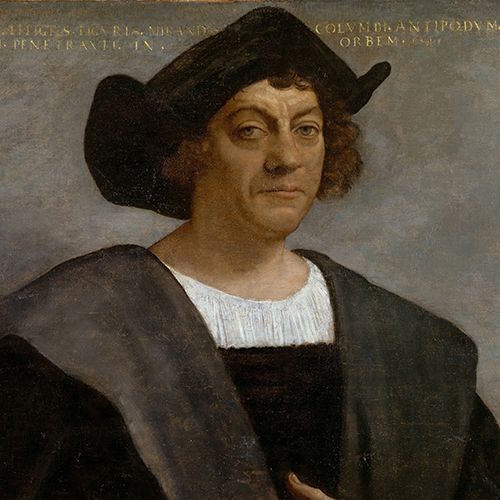
c. 1451-1506
Quick Facts
Where was columbus born, first voyages, columbus’ 1492 route and ships, where did columbus land in 1492, later voyages across the atlantic, how did columbus die, santa maria discovery claim, columbian exchange: a complex legacy, columbus day: an evolving holiday, who was christopher columbus.
Christopher Columbus was an Italian explorer and navigator. In 1492, he sailed across the Atlantic Ocean from Spain in the Santa Maria , with the Pinta and the Niña ships alongside, hoping to find a new route to Asia. Instead, he and his crew landed on an island in present-day Bahamas—claiming it for Spain and mistakenly “discovering” the Americas. Between 1493 and 1504, he made three more voyages to the Caribbean and South America, believing until his death that he had found a shorter route to Asia. Columbus has been credited—and blamed—for opening up the Americas to European colonization.
FULL NAME: Cristoforo Colombo BORN: c. 1451 DIED: May 20, 1506 BIRTHPLACE: Genoa, Italy SPOUSE: Filipa Perestrelo (c. 1479-1484) CHILDREN: Diego and Fernando
Christopher Columbus, whose real name was Cristoforo Colombo, was born in 1451 in the Republic of Genoa, part of what is now Italy. He is believed to have been the son of Dominico Colombo and Susanna Fontanarossa and had four siblings: brothers Bartholomew, Giovanni, and Giacomo, and a sister named Bianchinetta. He was an apprentice in his father’s wool weaving business and studied sailing and mapmaking.
In his 20s, Columbus moved to Lisbon, Portugal, and later resettled in Spain, which remained his home base for the duration of his life.
Columbus first went to sea as a teenager, participating in several trading voyages in the Mediterranean and Aegean seas. One such voyage, to the island of Khios, in modern-day Greece, brought him the closest he would ever come to Asia.
His first voyage into the Atlantic Ocean in 1476 nearly cost him his life, as the commercial fleet he was sailing with was attacked by French privateers off the coast of Portugal. His ship was burned, and Columbus had to swim to the Portuguese shore.
He made his way to Lisbon, where he eventually settled and married Filipa Perestrelo. The couple had one son, Diego, around 1480. His wife died when Diego was a young boy, and Columbus moved to Spain. He had a second son, Fernando, who was born out of wedlock in 1488 with Beatriz Enriquez de Arana.
After participating in several other expeditions to Africa, Columbus learned about the Atlantic currents that flow east and west from the Canary Islands.
The Asian islands near China and India were fabled for their spices and gold, making them an attractive destination for Europeans—but Muslim domination of the trade routes through the Middle East made travel eastward difficult.
Columbus devised a route to sail west across the Atlantic to reach Asia, believing it would be quicker and safer. He estimated the earth to be a sphere and the distance between the Canary Islands and Japan to be about 2,300 miles.
Many of Columbus’ contemporary nautical experts disagreed. They adhered to the (now known to be accurate) second-century BCE estimate of the Earth’s circumference at 25,000 miles, which made the actual distance between the Canary Islands and Japan about 12,200 statute miles. Despite their disagreement with Columbus on matters of distance, they concurred that a westward voyage from Europe would be an uninterrupted water route.
Columbus proposed a three-ship voyage of discovery across the Atlantic first to the Portuguese king, then to Genoa, and finally to Venice. He was rejected each time. In 1486, he went to the Spanish monarchy of Queen Isabella of Castile and Ferdinand II of Aragon. Their focus was on a war with the Muslims, and their nautical experts were skeptical, so they initially rejected Columbus.
The idea, however, must have intrigued the monarchs, because they kept Columbus on a retainer. Columbus continued to lobby the royal court, and soon, the Spanish army captured the last Muslim stronghold in Granada in January 1492. Shortly thereafter, the monarchs agreed to finance his expedition.
In late August 1492, Columbus left Spain from the port of Palos de la Frontera. He was sailing with three ships: Columbus in the larger Santa Maria (a type of ship known as a carrack), with the Pinta and the Niña (both Portuguese-style caravels) alongside.

On October 12, 1492, after 36 days of sailing westward across the Atlantic, Columbus and several crewmen set foot on an island in present-day Bahamas, claiming it for Spain.
There, his crew encountered a timid but friendly group of natives who were open to trade with the sailors. They exchanged glass beads, cotton balls, parrots, and spears. The Europeans also noticed bits of gold the natives wore for adornment.
Columbus and his men continued their journey, visiting the islands of Cuba (which he thought was mainland China) and Hispaniola (now Haiti and the Dominican Republic, which Columbus thought might be Japan) and meeting with the leaders of the native population.
During this time, the Santa Maria was wrecked on a reef off the coast of Hispaniola. With the help of some islanders, Columbus’ men salvaged what they could and built the settlement Villa de la Navidad (“Christmas Town”) with lumber from the ship.
Thirty-nine men stayed behind to occupy the settlement. Convinced his exploration had reached Asia, he set sail for home with the two remaining ships. Returning to Spain in 1493, Columbus gave a glowing but somewhat exaggerated report and was warmly received by the royal court.
In 1493, Columbus took to the seas on his second expedition and explored more islands in the Caribbean Ocean. Upon arrival at Hispaniola, Columbus and his crew discovered the Navidad settlement had been destroyed with all the sailors massacred.
Spurning the wishes of the local queen, Columbus established a forced labor policy upon the native population to rebuild the settlement and explore for gold, believing it would be profitable. His efforts produced small amounts of gold and great hatred among the native population.
Before returning to Spain, Columbus left his brothers Bartholomew and Giacomo to govern the settlement on Hispaniola and sailed briefly around the larger Caribbean islands, further convincing himself he had discovered the outer islands of China.
It wasn’t until his third voyage that Columbus actually reached the South American mainland, exploring the Orinoco River in present-day Venezuela. By this time, conditions at the Hispaniola settlement had deteriorated to the point of near-mutiny, with settlers claiming they had been misled by Columbus’ claims of riches and complaining about the poor management of his brothers.
The Spanish Crown sent a royal official who arrested Columbus and stripped him of his authority. He returned to Spain in chains to face the royal court. The charges were later dropped, but Columbus lost his titles as governor of the Indies and, for a time, much of the riches made during his voyages.
After convincing King Ferdinand that one more voyage would bring the abundant riches promised, Columbus went on his fourth and final voyage across the Atlantic Ocean in 1502. This time he traveled along the eastern coast of Central America in an unsuccessful search for a route to the Indian Ocean.
A storm wrecked one of his ships, stranding the captain and his sailors on the island of Cuba. During this time, local islanders, tired of the Spaniards’ poor treatment and obsession with gold, refused to give them food.
In a spark of inspiration, Columbus consulted an almanac and devised a plan to “punish” the islanders by taking away the moon. On February 29, 1504, a lunar eclipse alarmed the natives enough to re-establish trade with the Spaniards. A rescue party finally arrived, sent by the royal governor of Hispaniola in July, and Columbus and his men were taken back to Spain in November 1504.
In the two remaining years of his life, Columbus struggled to recover his reputation. Although he did regain some of his riches in May 1505, his titles were never returned.
Columbus probably died of severe arthritis following an infection on May 20, 1506, in Valladolid, Spain. At the time of his death, he still believed he had discovered a shorter route to Asia.
There are questions about the location of his burial site. According to the BBC , Columbus’ remains moved at least three or four times over the course of 400 years—including from Valladolid to Seville, Spain, in 1509; then to Santo Domingo, in what is now the Dominican Republic, in 1537; then to Havana, Cuba, in 1795; and back to Seville in 1898. As a result, Seville and Santo Domingo have both laid claim to being Columbus’ true burial site. It is also possible his bones were mixed up with another person’s amid all of their travels.
In May 2014, Columbus made headlines as news broke that a team of archaeologists might have found the Santa Maria off the north coast of Haiti. Barry Clifford, the leader of this expedition, told the Independent newspaper that “all geographical, underwater topography and archaeological evidence strongly suggests this wreck is Columbus’ famous flagship the Santa Maria.”
After a thorough investigation by the U.N. agency UNESCO, it was determined the wreck dates from a later period and was located too far from shore to be the famed ship.
Columbus has been credited for opening up the Americas to European colonization—as well as blamed for the destruction of the native peoples of the islands he explored. Ultimately, he failed to find that what he set out for: a new route to Asia and the riches it promised.
In what is known as the Columbian Exchange, Columbus’ expeditions set in motion the widespread transfer of people, plants, animals, diseases, and cultures that greatly affected nearly every society on the planet.
The horse from Europe allowed Native American tribes in the Great Plains of North America to shift from a nomadic to a hunting lifestyle. Wheat from the Old World fast became a main food source for people in the Americas. Coffee from Africa and sugar cane from Asia became major cash crops for Latin American countries. And foods from the Americas, such as potatoes, tomatoes and corn, became staples for Europeans and helped increase their populations.
The Columbian Exchange also brought new diseases to both hemispheres, though the effects were greatest in the Americas. Smallpox from the Old World killed millions, decimating the Native American populations to mere fractions of their original numbers. This more than any other factor allowed for European domination of the Americas.
The overwhelming benefits of the Columbian Exchange went to the Europeans initially and eventually to the rest of the world. The Americas were forever altered, and the once vibrant cultures of the Indigenous civilizations were changed and lost, denying the world any complete understanding of their existence.
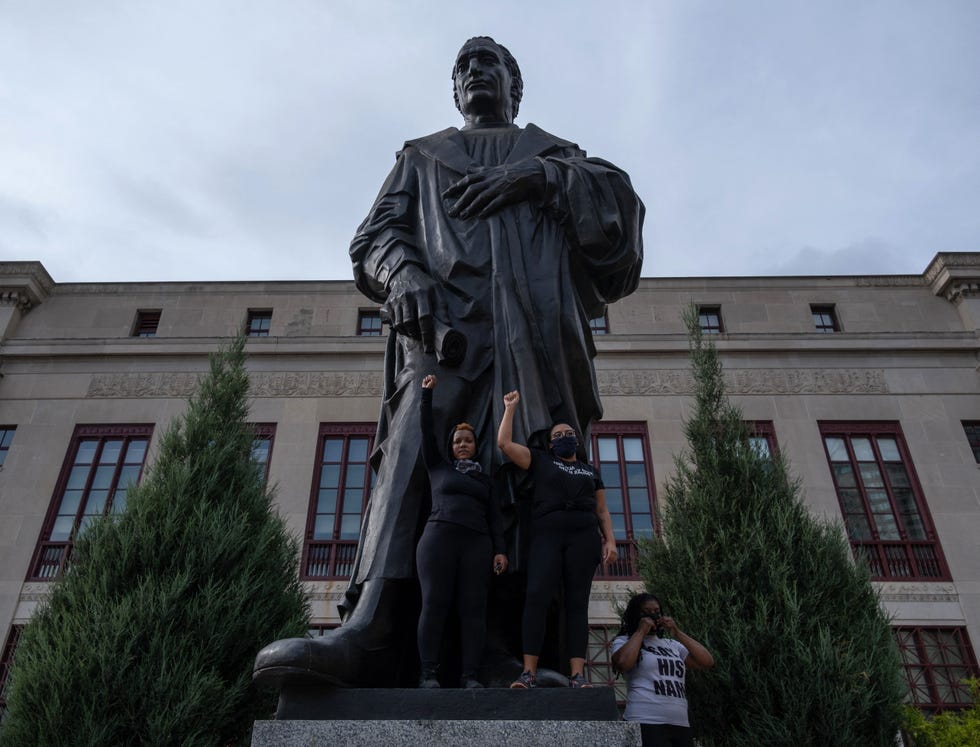
As more Italians began to immigrate to the United States and settle in major cities during the 19 th century, they were subject to religious and ethnic discrimination. This included a mass lynching of 11 Sicilian immigrants in 1891 in New Orleans.
Just one year after this horrific event, President Benjamin Harrison called for the first national observance of Columbus Day on October 12, 1892, to mark the 400 th anniversary of his arrival in the Americas. Italian-Americans saw this honorary act for Columbus as a way of gaining acceptance.
Colorado became the first state to officially observe Columbus Day in 1906 and, within five years, 14 other states followed. Thanks to a joint resolution of Congress, the day officially became a federal holiday in 1934 during the administration of Franklin D. Roosevelt . In 1970, Congress declared the holiday would fall on the second Monday in October each year.
But as Columbus’ legacy—specifically, his exploration’s impacts on Indigenous civilizations—began to draw more criticism, more people chose not to take part. As of 2023, approximately 29 states no longer celebrate Columbus Day , and around 195 cities have renamed it or replaced with the alternative Indigenous Peoples Day. The latter isn’t an official holiday, but the federal government recognized its observance in 2022 and 2023. President Joe Biden called it “a day in honor of our diverse history and the Indigenous peoples who contribute to shaping this nation.”
One of the most notable cities to move away from celebrating Columbus Day in recent years is the state capital of Columbus, Ohio, which is named after the explorer. In 2018, Mayor Andrew Ginther announced the city would remain open on Columbus Day and instead celebrate a holiday on Veterans Day. In July 2020, the city also removed a 20-plus-foot metal statue of Columbus from the front of City Hall.
- I went to sea from the most tender age and have continued in a sea life to this day. Whoever gives himself up to this art wants to know the secrets of Nature here below. It is more than forty years that I have been thus engaged. Wherever any one has sailed, there I have sailed.
- Speaking of myself, little profit had I won from twenty years of service, during which I have served with so great labors and perils, for today I have no roof over my head in Castile; if I wish to sleep or eat, I have no place to which to go, save an inn or tavern, and most often, I lack the wherewithal to pay the score.
- They say that there is in that land an infinite amount of gold; and that the people wear corals on their heads and very large bracelets of coral on their feet and arms; and that with coral they adorn and inlay chairs and chests and tables.
- This island and all the others are very fertile to a limitless degree, and this island is extremely so. In it there are many harbors on the coast of the sea, beyond comparison with others that I know in Christendom, and many rivers, good and large, which is marvelous.
- Our Almighty God has shown me the highest favor, which, since David, he has not shown to anybody.
- Already the road is opened to gold and pearls, and it may surely be hoped that precious stones, spices, and a thousand other things, will also be found.
- I have now seen so much irregularity, that I have come to another conclusion respecting the earth, namely, that it is not round as they describe, but of the form of a pear.
- In all the countries visited by your Highnesses’ ships, I have caused a high cross to be fixed upon every headland and have proclaimed, to every nation that I have discovered, the lofty estate of your Highnesses and of your court in Spain.
- I ought to be judged as a captain sent from Spain to the Indies, to conquer a nation numerous and warlike, with customs and religions altogether different to ours.
Fact Check: We strive for accuracy and fairness. If you see something that doesn’t look right, contact us !
The Biography.com staff is a team of people-obsessed and news-hungry editors with decades of collective experience. We have worked as daily newspaper reporters, major national magazine editors, and as editors-in-chief of regional media publications. Among our ranks are book authors and award-winning journalists. Our staff also works with freelance writers, researchers, and other contributors to produce the smart, compelling profiles and articles you see on our site. To meet the team, visit our About Us page: https://www.biography.com/about/a43602329/about-us
Tyler Piccotti first joined the Biography.com staff as an Associate News Editor in February 2023, and before that worked almost eight years as a newspaper reporter and copy editor. He is a graduate of Syracuse University. When he's not writing and researching his next story, you can find him at the nearest amusement park, catching the latest movie, or cheering on his favorite sports teams.
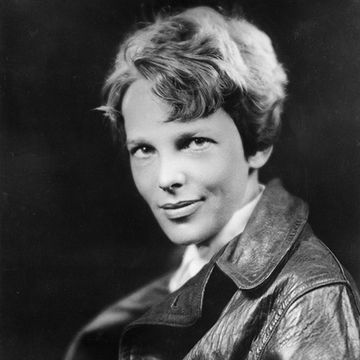
Possible Evidence of Amelia Earhart’s Plane
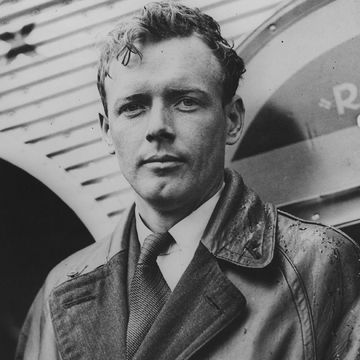
Charles Lindbergh

Was Christopher Columbus a Hero or Villain?
History & Culture
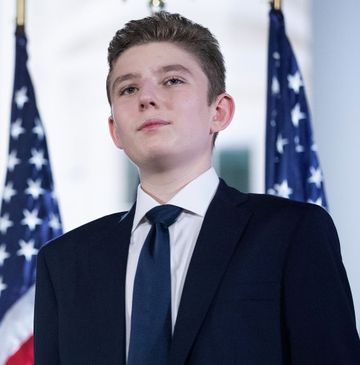
Barron Trump

Alexander McQueen
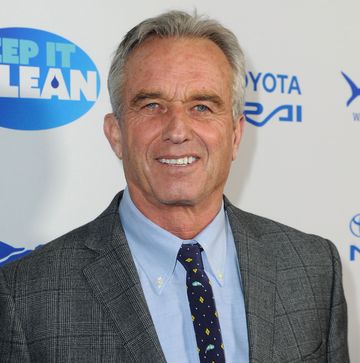
Robert F. Kennedy Jr.

Eleanor Roosevelt

Michelle Obama
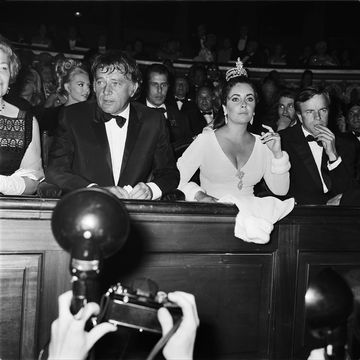
Rare Vintage Photos of Celebrities at the Opera
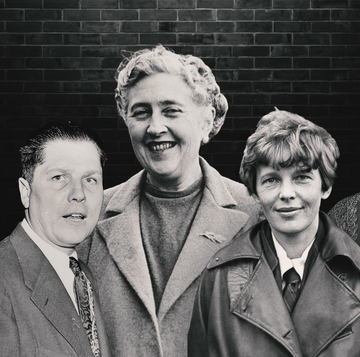
The 12 Greatest Unsolved Disappearances
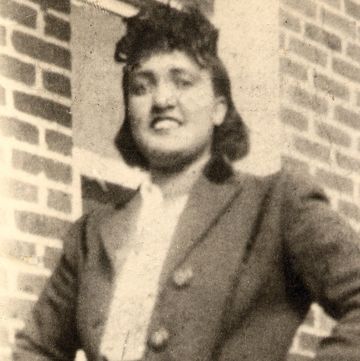
Henrietta Lacks
Recent Posts
- Joseph Stalin – Wartime Leader of the USSR
- Little Boy – The First Nuclear Weapon Used in Warfare
- Jefferson Davis – President of the Confederacy
- The Battle of Gettysburg – The Longest Battle of the Civil War
- What Led to the American Revolution?
Most Used Categories
- People (31)
- Politics (12)
- Ancient World (7)
- United States (7)
- Science (3)
- Newsletter (1)
Historia Corner
Weekly essays
The Third Voyage Of Christopher Columbus In 1492
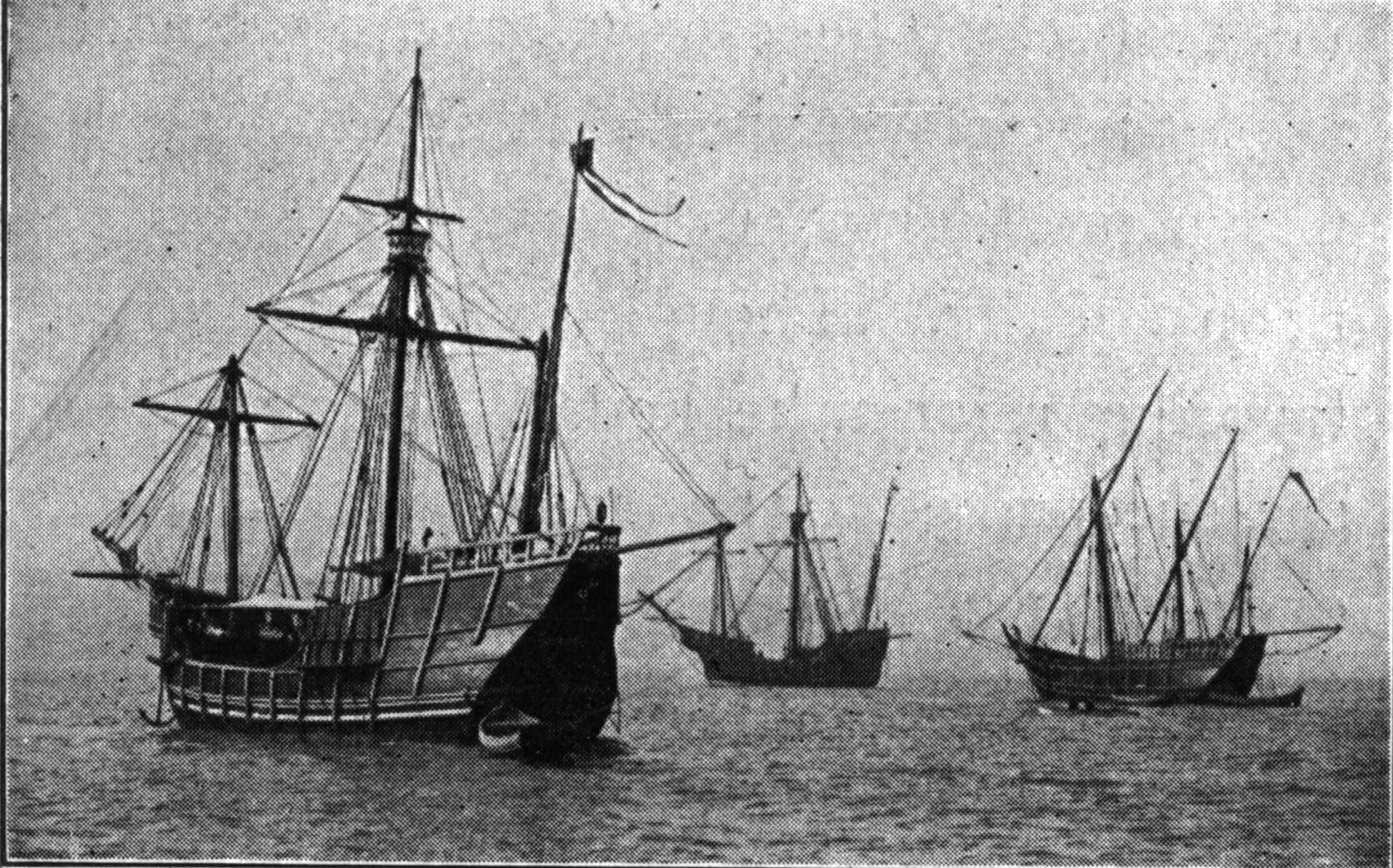
The Italian explorer Christopher Columbus was seen as the discoverer of America in 1492.
However, he himself never knew that it was not India where he arrived, and on this day in 1498, he took off for his third voyage to explore the world.
He made his name through his discovery of America under the Spanish flag in 1492. Columbus thought he had reached the Indies after crossing the Atlantic Ocean but had stumbled upon a New World in reality. His discovery marks a turning point in world history, the significance of which can hardly be overestimated.
European powers colonized both American continents. The ample amounts of land and raw materials played a role in the emergence of Europe as the dominant continent in the world.
The Columbian exchange ensured a worldwide exchange of crops, animals, and diseases. The contagious diseases of the Old World had a devastating effect on indigenous peoples.
Table of Contents
The Life Of Columbus Might Be As Peculiar As His Journeys
As remarkable as Columbus’s discoveries are his own life. Despite his humble origins, he managed to gain entry to the royal courts of Portugal and Spain to advocate his plans for a westward route to Asia.
Based on his practical experiences at sea and — erroneous — geographic assumptions, he argued that this would be a short crossing. After years of lobbying, he was given the green light by Queen Isabella of Castile.
In four voyages of discovery, he mapped a large part of the Caribbean. Columbus also became governor of the Spanish colony on Hispaniola but was unsuccessful as an administrator.
He proved unable to build up an effective authority and was relieved of his position in 1500.
On Hispaniola, Columbus set the tone for Spanish rule over the indigenous peoples of the New World by violently subjugating the local Taíno. After a final trip to Central America, he died in 1506, still convinced that he had reached Asia.
Columbus His Journey To Sponsors
Columbus needed the support of a state for his expedition if only to protect any discoveries. He had no financial resources of his own. In 1484 he approached the Portuguese King John II for a westward journey, but his request was rejected.
After catching up in Portugal, Columbus sought refuge in Spain. He didn’t have happy timing. The Catholic royal couple, Isabella of Castile and Ferdinand of Aragon had their hands full with the war against Granada.
The final conquest of Granada in 1492 marked the completion of the Reconquista of the Iberian Peninsula.
Spain also focused on overseas expansion: between 1478 and 1496, the Spaniards conquered Gran Canaria, La Palma, and Tenerife in the Canary Islands. For Columbus, because of their location in the area of the northeast trade, these islands were an ideal starting point for his journey across the Atlantic Ocean.
There were many negotiations with the Spanish state, and after years of discussions and courts, Queen Isabella of Spain decided on the 3rd of January 1492 that she would fund his voyage.
The Highlights Of His First Two Voyages
With three ships and 90 crew members, Columbus set sail for the west in August 1492. He keeps detailed records of the trip in his logbooks.
On October 12, 1492, land comes into view for the first time. Because Columbus thinks he is in the Indies, he calls the inhabitants Indians. He calls the island where he arrives San Salvador.
Which island is where Columbus arrived is still uncertain. What is certain is that he arrived on one of the Bahama Islands.
September 1493, Columbus again sets sail for the west with 17 ships. He then moors on the islands of Dominica, Guadeloupe, and Puerto Rico. Then he leaves for his settlement La Navidad.
There he notices that Indians murdered all 39 Spaniards who remained there. Columbus then founds a new colony, Santa Domingo, the current capital of the Dominican Republic.
Before returning to Spain, he discovers Jamaica, even more to the west.
He also sails past Cuba again. After sailing hundreds of miles along the Cuban coast, the explorer is convinced that he has reached the mainland of the Indies.
His Third Voyage In 1492
The moment we’ve all been waiting for, his third voyage. It happened exactly 523 years ago that he took off for his third voyage.
It will be the most memorable of the three trips. South America as we know it now had its first known European landing when Christopher Columbus discovered land on the Orinoco River in present-day Venezuela in 1498. To complete his quest, he discovers the little island nation of Trinidad, situated off the coast of Venezuela.
Meanwhile, his men are subjecting the natives of Hispaniola to slavery. They are constantly hunted and murdered. The issue is becoming worse, and Columbus is helpless to stop it. While making his trip to the New World, Columbus’ envoy Francisco de Bobadilla expresses a letter to the king about his fury at the atrocities he saw in the Caribbean.
He is accused of using authority to hurt the poor, and indigenous, and, according to the Catholic priest, he has even forbidden missionaries from baptizing the poor.
As a result, Columbus enacted legislation to stop it, fearing that the people may still be used as slaves. It is against the law for Christians to sell fellow Christians into slavery.
The voyage of Christopher Columbus in 1492 remains one of the most significant events in world history. It opened up a new world to the Europeans and set the stage for the modern era of exploration. Despite the controversies surrounding Columbus’s legacy, there’s no denying the profound impact of his 1492 journey.
Related Posts

History’s 11 Most Famous Autistic People

The Unraveling Tale of Jennifer Pan: Where is She Now?
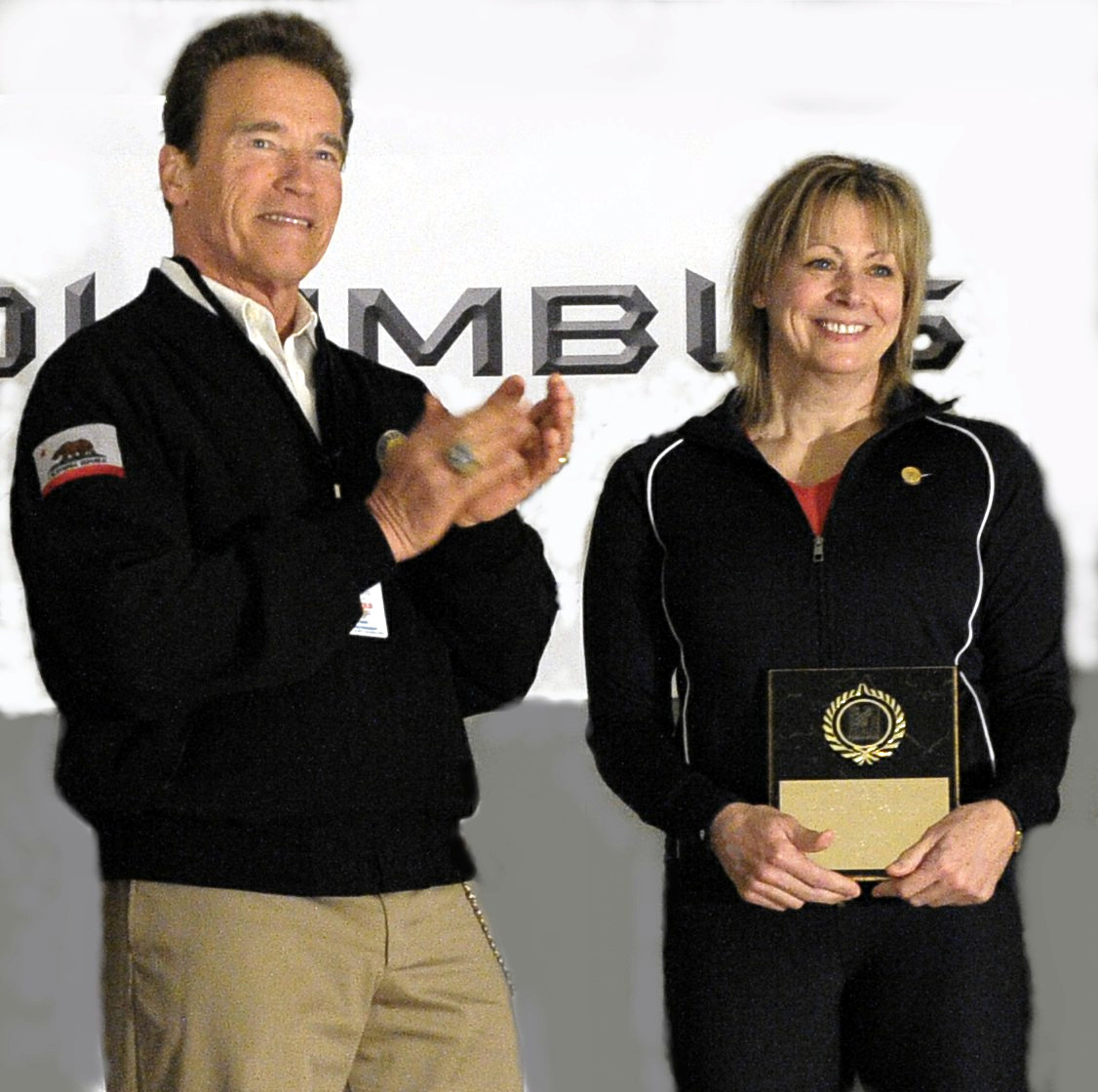
Arnold Schwarzenegger: A Towering Figure in Bodybuilding, Film, and Politics
Leave a reply cancel reply.
Your email address will not be published. Required fields are marked *
Save my name, email, and website in this browser for the next time I comment.

IMAGES
VIDEO
COMMENTS
The Third Voyage of Christopher Columbus. After his famous 1492 voyage of discovery, Christopher Columbus was commissioned to return a second time, which he did with a large-scale colonization effort which departed from Spain in 1493. Although the second journey had many problems, it was considered successful because a settlement was founded ...
In October 1501 Columbus went to Sevilla to make ready his fourth and final expedition. Christopher Columbus - Exploration, Caribbean, Americas: The gold, parrots, spices, and human captives Columbus displayed for his sovereigns at Barcelona convinced all of the need for a rapid second voyage. Columbus was now at the height of his popularity ...
The Voyages of Christopher Columbus; Part of the Age of Discovery: The four voyages of Columbus (conjectural) Date: 1492, 1493, 1498 & 1502: Location: The Americas: ... Third voyage (1498-1500) Location of Sanlúcar de Barrameda, the starting point for Columbus's third journey Third voyage.
Columbus began his third voyage to the New World on May 30th, 1498 when he left Spain with six ships. Three of the six ships immediately sailed to Hispaniola with supplies for the settlers who remained on the island. However, Columbus took the other three ships with him in order to explore a more southerly route than he had ever previously taken.
The explorer Christopher Columbus made four voyages across the Atlantic Ocean from Spain: in 1492, 1493, 1498 and 1502. His most famous was his first voyage, commanding the ships the Nina, the ...
Christopher Columbus (/ k ə ˈ l ʌ m b ə s /; between 25 August and 31 October 1451 - 20 May 1506) was an Italian explorer and navigator from the Republic of Genoa who completed four Spanish-based voyages across the Atlantic Ocean sponsored by the Catholic Monarchs, opening the way for the widespread European exploration and European colonization of the Americas.
Christopher Columbus, Italian Cristoforo Colombo Spanish Cristóbal Colón , (born between Aug. 26 and Oct. 31?, 1451, Genoa—died May 20, 1506 ... On his third voyage (1498-1500) he reached South America and the Orinoco River delta. Allegations of his poor administration led to his being returned to Spain in chains. On his fourth voyage ...
Christopher Columbus (born between August 26 and October 31?, 1451, Genoa [Italy]—died May 20, 1506, Valladolid, Spain) master navigator and admiral whose four transatlantic voyages (1492-93, 1493-96, 1498-1500, and 1502-04) opened the way for European exploration, exploitation, and colonization of the Americas. He has long been called the "discoverer" of the New World, although ...
First Voyage: 1492-1493 CE; Second Voyage: 1493-1496 CE; Third Voyage: 1498-1500 CE; Fourth Voyage: 1502-1504 CE; Columbus never set out to discover a New World, but to find a western sea route to the Far East to facilitate trade after the land route of the Silk Road, between Europe and the East, had been closed by the Ottoman Empire in 1453 CE, initiating the so-called Age of Exploration ...
To accomplish his mission, Columbus took a priest and other clerics with him. He was also accompanied by soldiers, farmers, and gold miners. 226 men set out with Columbus on his third voyage, among whom were 10 pardoned murderers. On May 30th, 1498, Columbus' third voyage commenced. He explored Trinidad and parts of Venezuela.
The Third Voyage of Columbus, 1498-1500. Columbus left the port of Sanlucar in southern Spain on May 30, 1498 with six ships, bound for the New World on his third voyage. After stopping at the islands of Porto Santo and Madeira, the fleet arrived at Gomera in the Canary Islands on June 19. At this point, the fleet split into two squadrons ...
Christopher Columbus - 3nd Voyage. On May 30, 1498, Christopher Columbus left Sanlúcar, Spain with six ships for his third trip to the New World. He was accompanied by Bartolomé de Las Casas, who would later publish partial transcripts of Columbus' logs. Columbus sailed to the Portuguese island of Porto Santo, then spent some in Madeira with ...
Third Voyage, 1498-1500. Columbus spent most of 1496 and 1497 restoring his reputation with the court and building support for a third voyage. He left Spain on May 30, 1498, with a fleet of three supply ships headed for Hispaniola and three ships whose goal was to discover if there was a landmass south of it. ... The Life of Christopher ...
Christopher Columbus, whose real name was Cristoforo Colombo, was born in 1451 in the Republic of Genoa, part of what is now Italy. ... It wasn't until his third voyage that Columbus actually ...
The Italian explorer Christopher Columbus was seen as the discoverer of America in 1492. However, he himself never knew that it was not India where he arrived, and on this day in 1498, he took off for his third voyage to explore the world. He made his name through his discovery of America under the Spanish flag in 1492.
Christopher Columbus is one of the most significant figures in all of World History and is particularly important to major world events such as the Age of Exploration and Renaissance.His four famous journeys to the New World in the late 15th century and early 16th century altered the history of the world and led to a mass migration of people from the Old World to the New World.
1498 - 1500. Third Voyage of Christopher Columbus to the New World to find a passage to the East; South and Central America are identified. 1502 - 1504. Fourth Voyage of Christopher Columbus to the New World; Spanish colonies now operating fully without him, systemic exploitation of indigenous people has become policy.
A timeline of major events in the life of Italian-born navigator and explorer Christopher Columbus, whose four transatlantic voyages (1492-93, 1493-96, 1498-1500, and 1502-04) opened the way for European exploration, ... Wars with France reduce Spain's support for Columbus, and he sets sail with only six ships for his third voyage. He ...
The History of a Voyage which Don Christopher Columbus made the third time that he came to the Indies, when he discovered terra firma, and which he sent to their Majesties from the Island of Hispaniola. M ost serene and most exalted and powerful Princes, the King and Queen, our Sovereigns. The Blessed Trinity moved your Highnesses to the ...
A History of the Life and Voyages of Christopher Columbus is a fictional biographical account of Christopher Columbus written by Washington Irving in 1828. It was published in four volumes in Britain and in three volumes in the United States. [1] [2] [3] The work was the most popular treatment of Columbus in the English-speaking world until the ...
Summary. Narrative, of the Voyage which Don Christopher Columbus made the third time that he came to the Indies, when he discovered terra firma, as he sent it to their Majesties from the Island of Hispaniola. M ost serene and most exalted and powerful Princes, the King and Queen, our Sovereigns: The Blessed Trinitymoved your Highnesses to this ...
Columbus is losing favor in both Spain and the colony of Hispaniola. Can he restore order when a rebellion breaks out? What happens when the Spanish crown ...
Christopher Columbus - Exploration, Caribbean, Legacy: The winter and spring of 1501-02 were exceedingly busy. The four chosen ships were bought, fitted, and crewed, and some 20 of Columbus's extant letters and memoranda were written then, many in exculpation of Bobadilla's charges, others pressing even harder the nearness of the Earthly Paradise and the need to reconquer Jerusalem ...